Antinol® Latest Studies
Sorted by recent
 Filter Studies by Smart Tags
Filter Studies by Smart Tags
Bone & JointCardiovascularCase Study & ProceedingCatDogEAB 277™EfficacyExotic PetImmunologyNeuro & BehaviorOphthalmologyOralRabbitRenalRespiratoryRodentSafetySkinUTI
Smart Search
Use of PCSO-524® and Cyclosporin for Treatment of Immune-Mediated Polyarthritis in Dogs

An 8 years old Chihuahua dog was admitted to the Small Animal Hospital at Chulalongkorn University due to signs of depression, lethargy, lameness and joint effusion. Hematological examination and test of synovial fluid indicated Immune-Mediated Polyarthritis (IMPA).
Prednisolone, Gabapentin and Amoxillin-clavulanic acid were prescribed for the treatment. Abnormally increase of ALT, ALK and AST enzyme was observed 1 week later, therefore, the treatment was changed to Cyclosporin, Gabapetin, and PCSO-524®. The clinical signs continued to improve after the adjustment of prescription and Cyclosporin and Gabapetin were terminated after 3 and 4 months, respectively.
A follow-up examination at 4 months later showed no signs of lameness and joint effusion and no adverse effects caused by the long-term use of PCSO-524®.
The success of IMPA treatment is a result of rapid diagnosis and appropriate treatment protocol. Follow-up for treatment evaluation is necessary during the treatment course in order to reduce the impact on health and minimize the medication dosage without risk of causing adverse effects or recurrence of the disease.

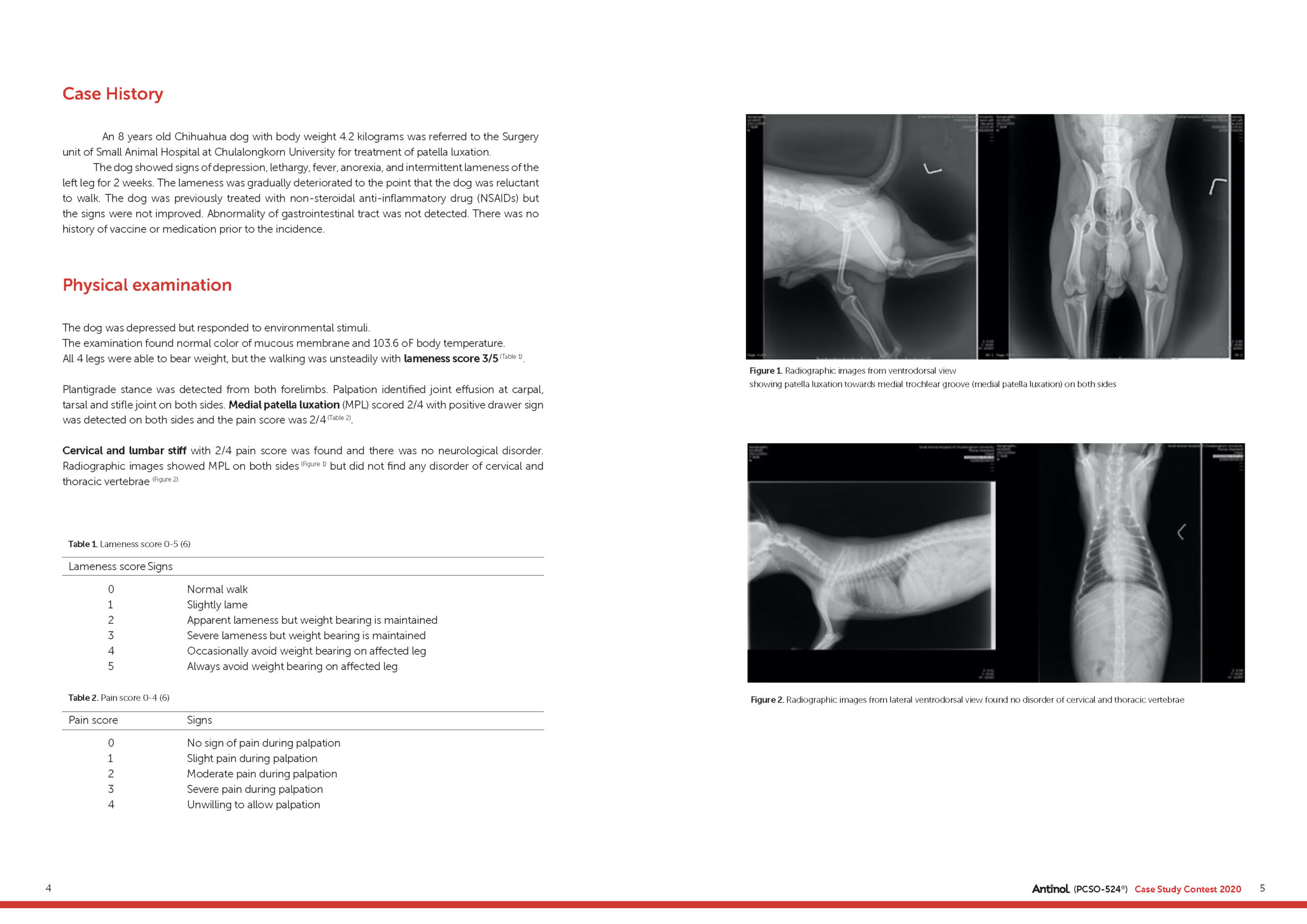
Nutraceutical Treatment of Feline Fhne and Hip Dysplasia in an 8-Month Old Cat

A Persian male cat was diagnosed with right hip luxation and left hip injury. While waiting for surgical treatment, the cat was treated with NSAIDs to control pain and inflammation.
After the operation on the right femoral head (right FHNE), the cat received antibiotics and NSAIDs for 10 and 3 consecutive days, respectively. Two weeks after the operation, the lameness and pain of the right hip, as observed from palpation, still remained, but the cat began to bear partial weight.
PCSO-524® was then prescribed and the gait analysis was performed to measure the angle of joint movement.
The monitoring showed increased angle of joint movement and decreased lameness score. This was consistent with the owner report that described less hiding behavior of the cat and improved high jump performance and better quality of life.

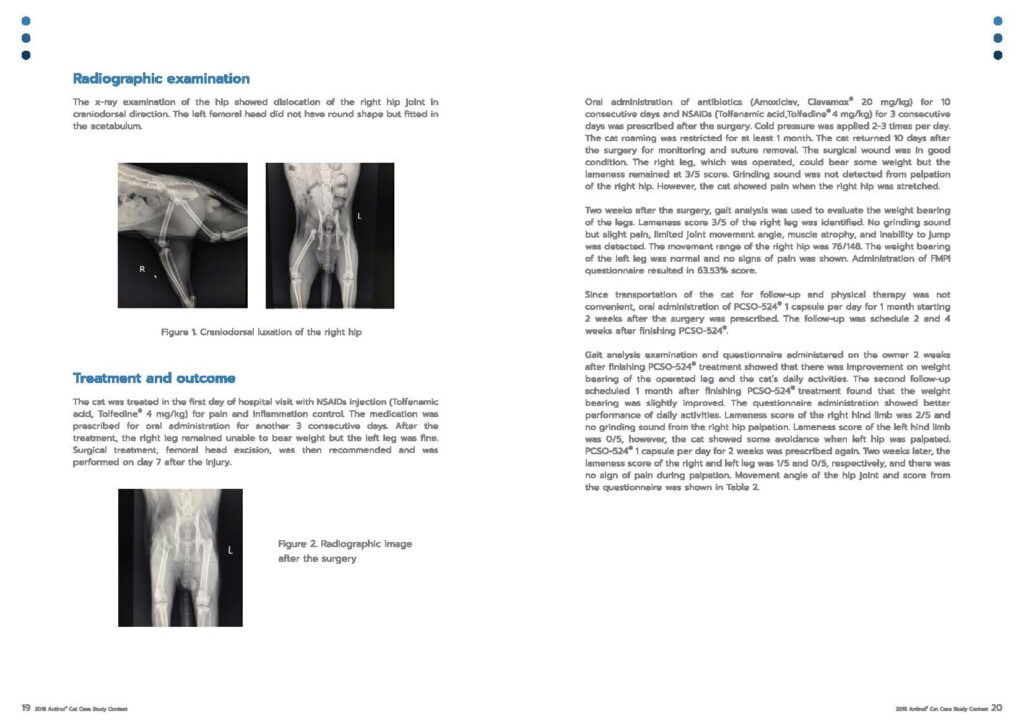
Antinol® Case Study Contest 2017

10 Case Reports using PCSO-524® in combination with the treatment regimen for dogs and cats.
Pharmalink International Ltd. and Vetz Petz® would like to thank everyone involved in this 2017 Antinol® Case Study Contest competition and pay homage to our Professors and Veterinarians who have assisted in the judging of the competition.
This 2017 contest was very special with the inclusion of Professor Duncan Lascelles and the wonderful innovation of the live poll that the audience took part in to choose the Vets choice and favorite presentation.




Treatment of Severe Hind Limb Paresis and Posterior Paresis Caused by Traumatic Myelopathy in Cats Using PSCO-524® (Antinol®) and Physical Therapy

A 2 years old domestic short hair cat weighted 3.55 kilograms was referred to Kasetsart University Veterinary Hospital for severe hind limb paresis with loss of sensory function. The onset of symptoms was observed a week ago after the cat returned from missing. Radiographic examination did not show any vertebral disorders. Magnetic Resonance Imaging (MRI) examination found accumulation of fluid in spinal cord at T10-T12 level, which indicated spinal cord injury. Traumatic myelopathy was diagnosed.
The paresis was grade 5 so PSCO-524® (Antinol®) 1 capsule per day was prescribed. After a week of the treatment, the cat was able to control urination and voluntary motor function of the hind limbs.
However, the sensory system malfunction remained. Spinal walk, walking with the hind limbs when sensation loss was observed after physical therapy was concurrently provided for 3 weeks.
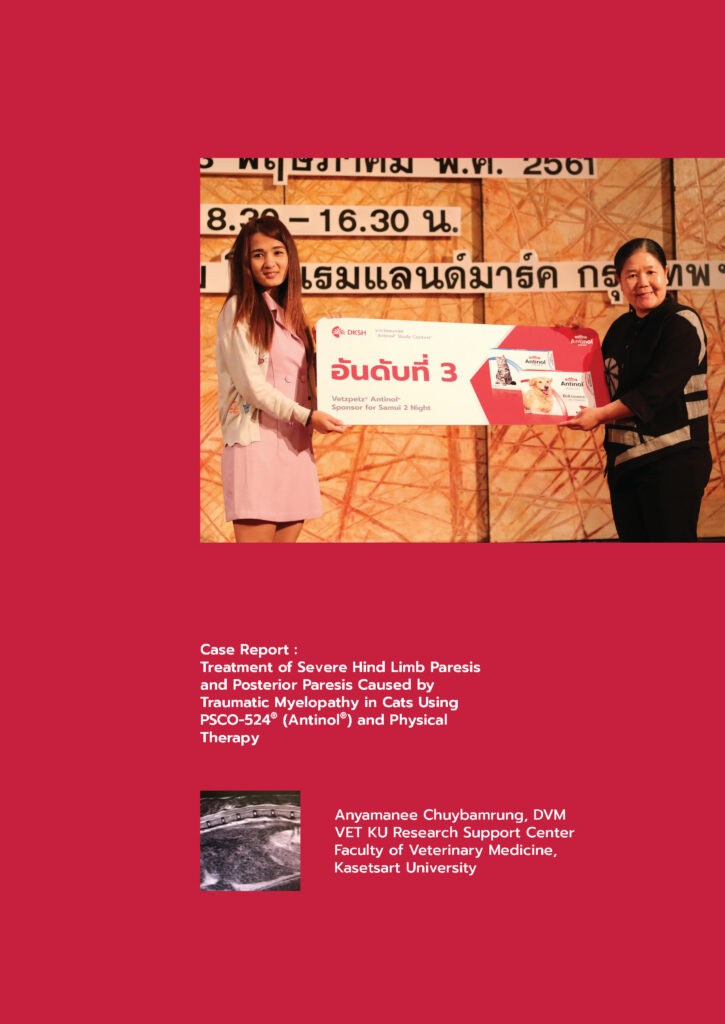
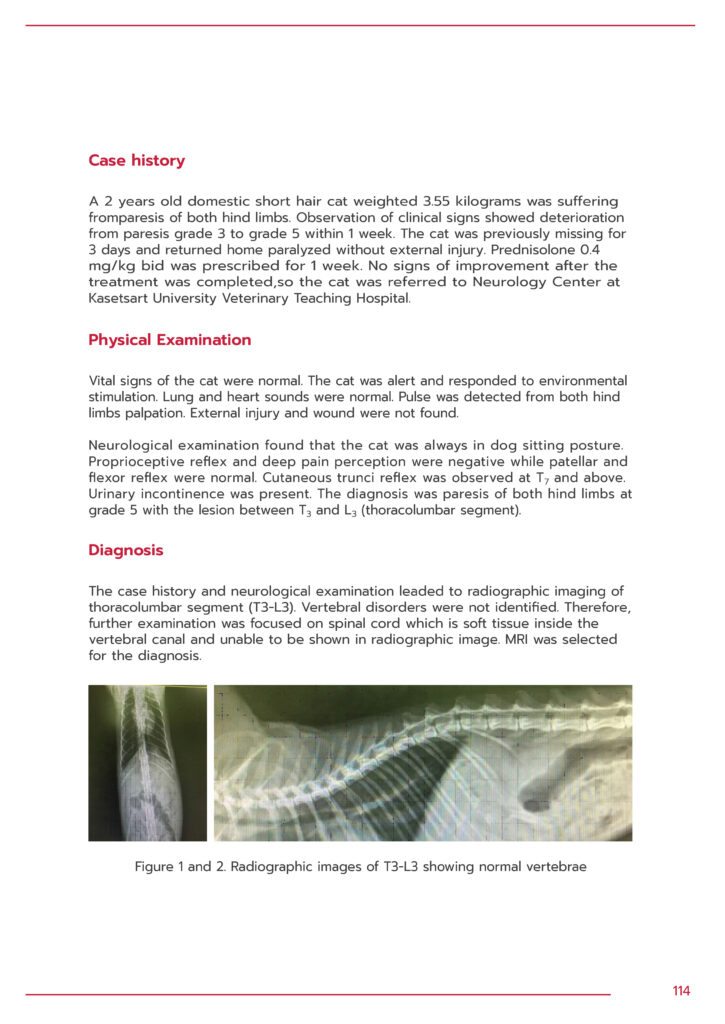
Efficacy of PCSO-524® and prednisolone combination treatment for neck pain in Chihuahua dog with Chiari-like malformation and syringomyelia

A 18-month-old male intact chihuahua presented with recurrent neck pain within 3 months after stop using prednisolone.
Upon physical and neurological examination, dog displayed pain and neck stiffness without neurological deficits. Radiographic findings of cervical spine was normal.
The dog was treated with prednisolone to relieve pain and inflammation and showed improvement of clinical signs. However, the recurrence occurred in 7 months with more severity. Magnetic resonance
imaging (MRI) demonstrated Chiari-like malformation and syringomyelia at C2-C4 and C7-T1 region.
PCSO-524® (VetzPetz Antinol®) was administered in combination with prednisolone and gabapentin. The clinical signs improved in 2 weeks so prednisolone was gradually reduced until discontinued but dose of PCSO-524® remained constantly. The dog was able to recover from neck pain and continued life activities as normal.
Long-term supplement of PCSO-524® (VetzPetz Antinol®) was effective for reducing inflammation of spinal cord in dog suffered from neck pain caused by syringomyelia.


The Trial Treatment of Feline Osteoarthritis in an Eleven-Year-Old Cat

A domestic short hair cat aged 11 years was taken to the hospital due to shaking and weakened hind legs. The cat could not perform high jump for 1 month.
Preliminary diagnosis included early stage of osteoarthritis of left hip and capsulitis.
Pain killers, NSAIDs and gabapentin, were administered but the response was not satisfied. Therefore, multimodal treatment program was initiated. Physical therapy using electrical stimulation and laser beam class 4 in conjunction with PCSO-524® were used. Measurement of joint movement angle (active range of motion; active ROM) in 2 dimensions using Kinovea program was conducted for follow up.
The study found increased active ROM and decreased lameness score after the treatment.
The owner described that the cat showed less isolation behavior and was able to perform vertical jump again. Overall quality of the cat’s life was improved.
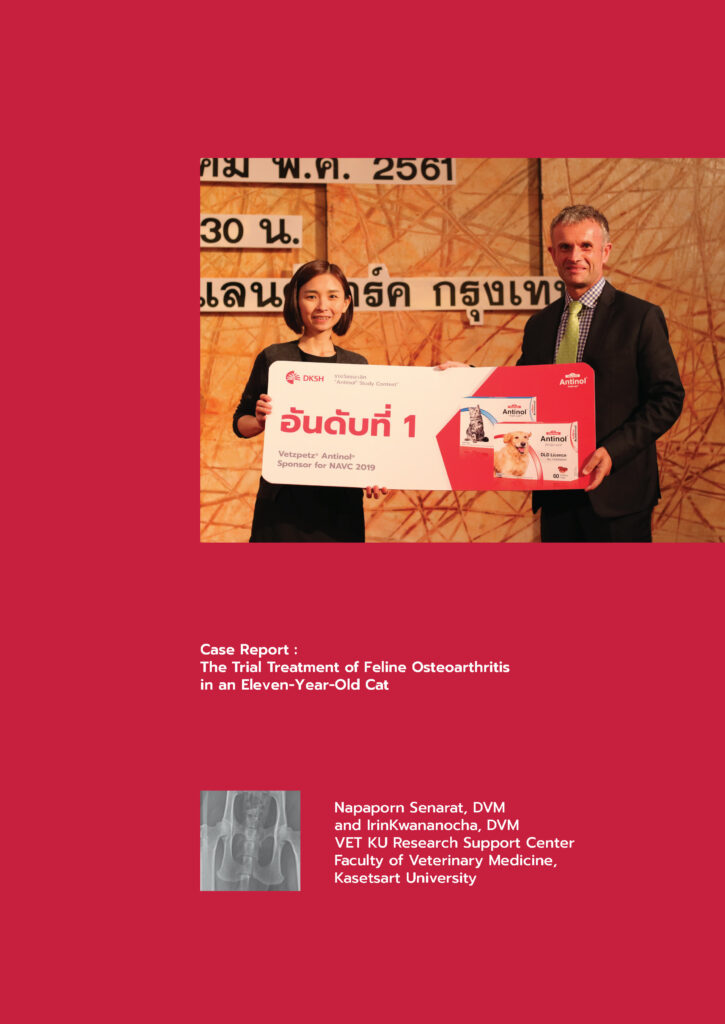

Updated Study Topics
New researches and publications related to PCSO-524® and its result in clnical test submitted by veterinarians on the global conferences every year and the data keeps growing with more studies conducted


 Authors:
Authors: